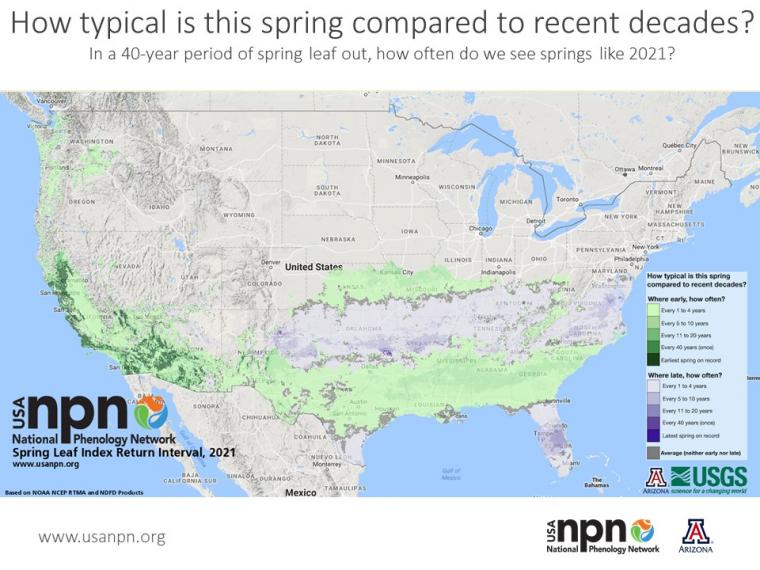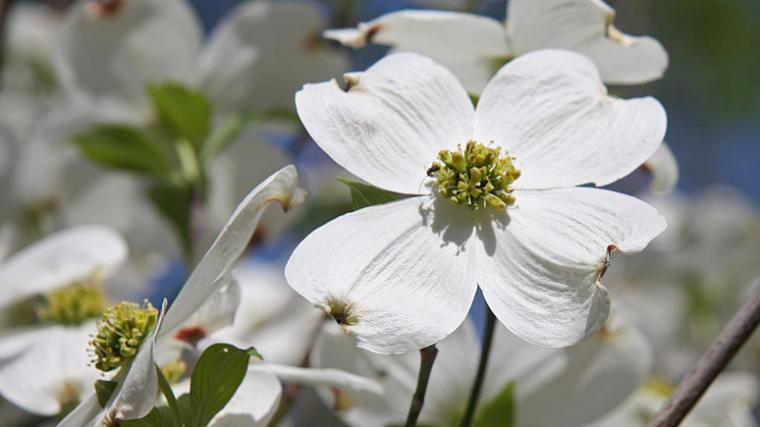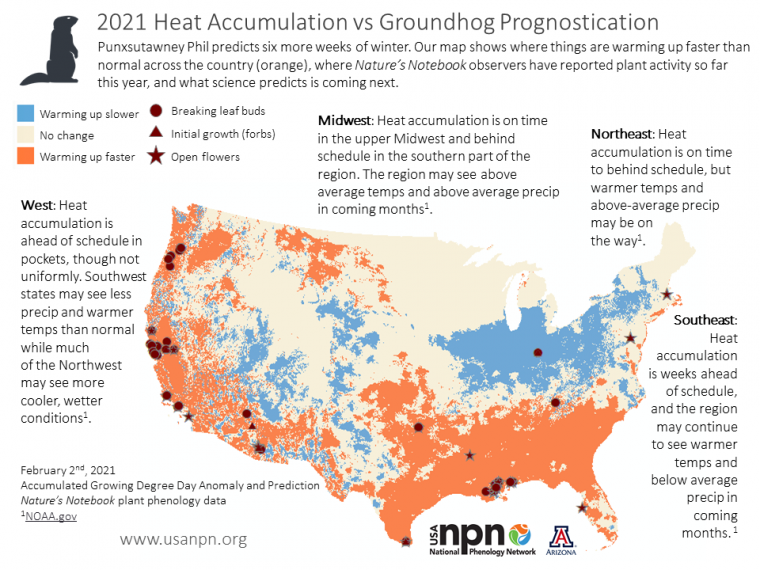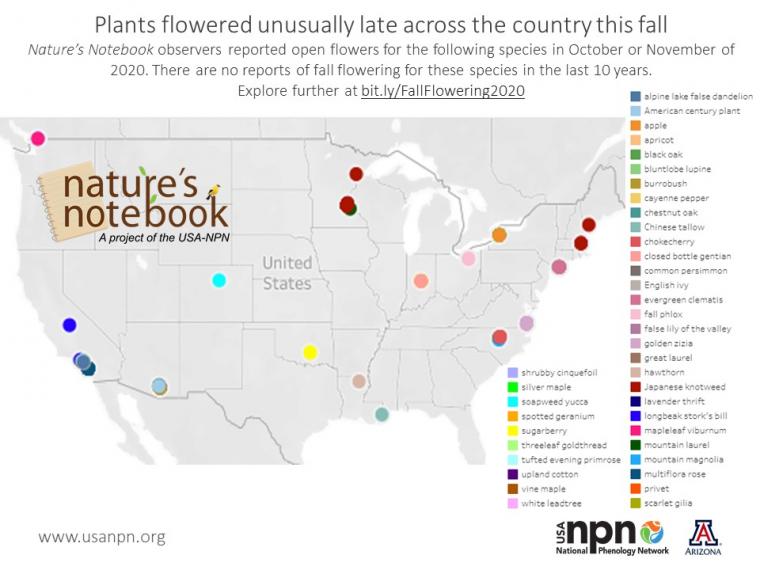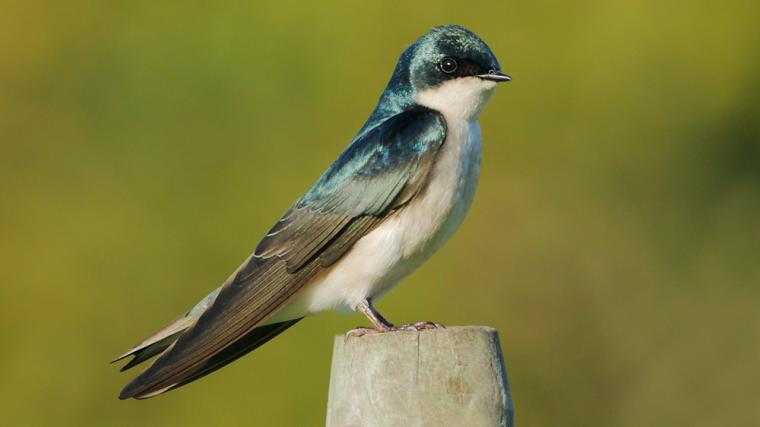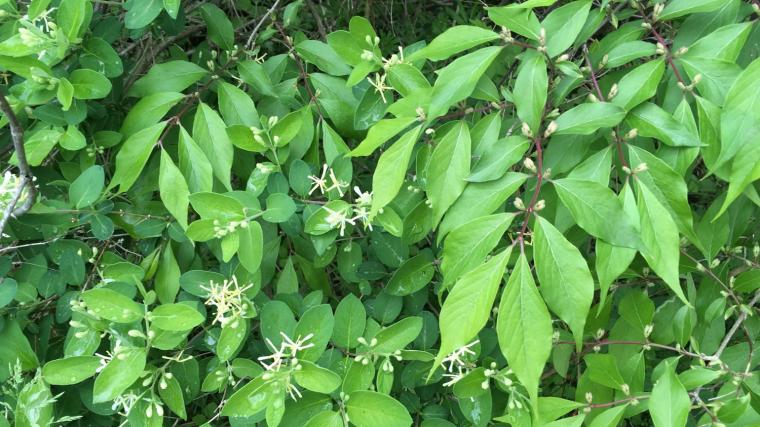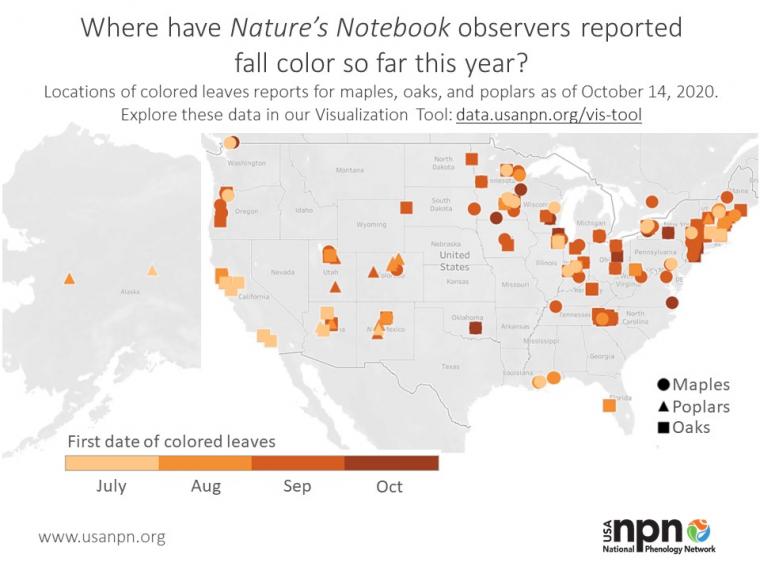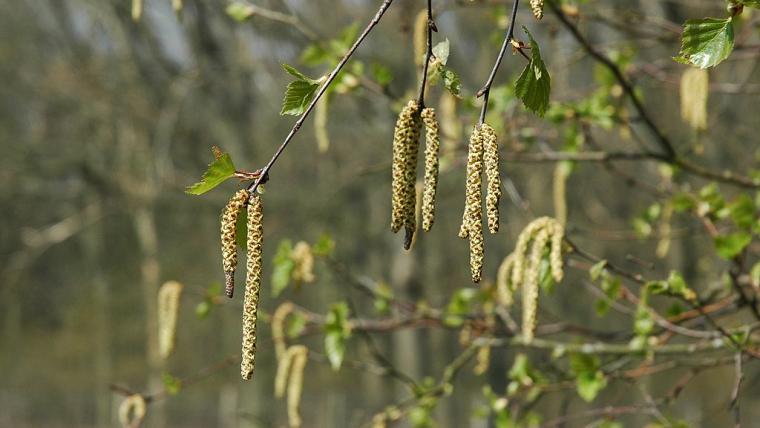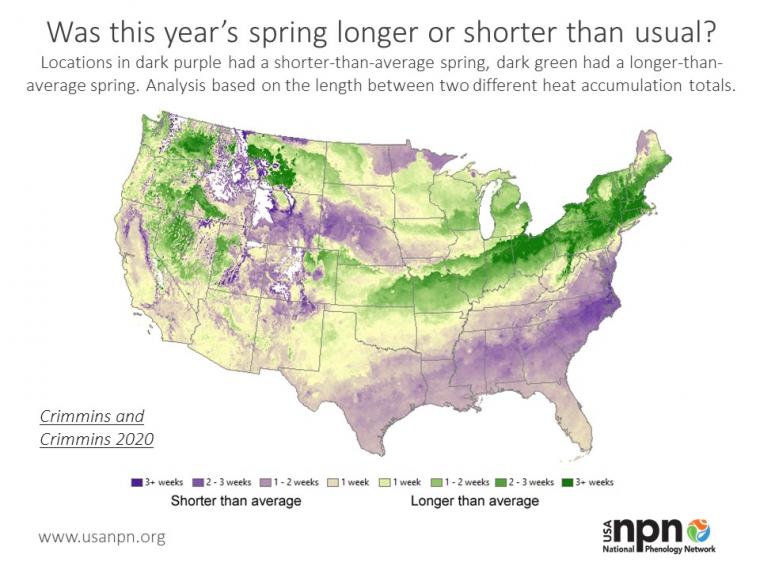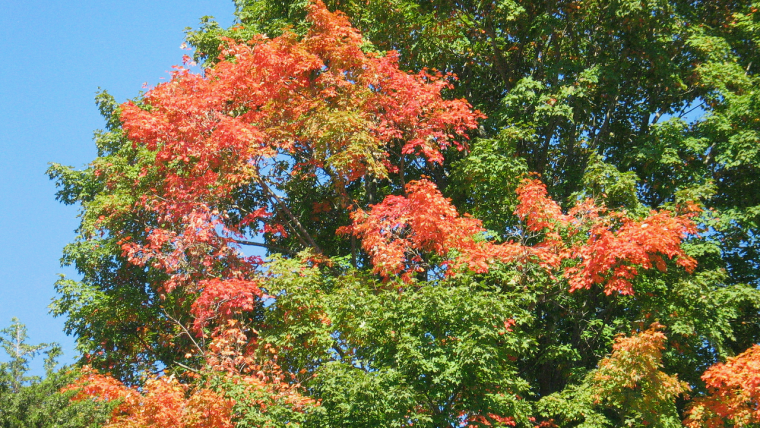
New look at national patterns in leaf out and leaf color change
Fri, May 14, 2021
We have a decade of data on over a thousand species – thanks to your efforts! We can start to answer big picture questions, as this study did, finding that leaf out in spring comes earlier in response to longer days and spring warmth, and is delayed by freezes and lack of winter cold. Delayed phenology can be a good thing, protecting plants from false springs - or have a negative effect, by limiting the time plants have to take advantage of the growing season.
